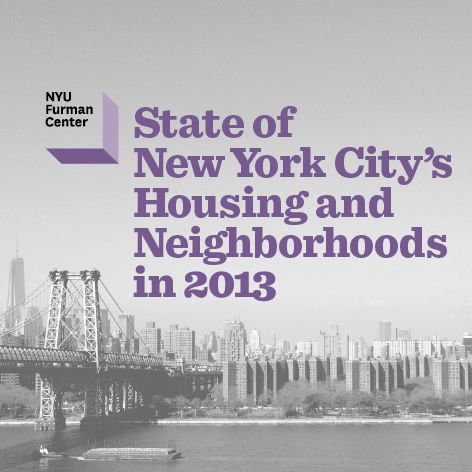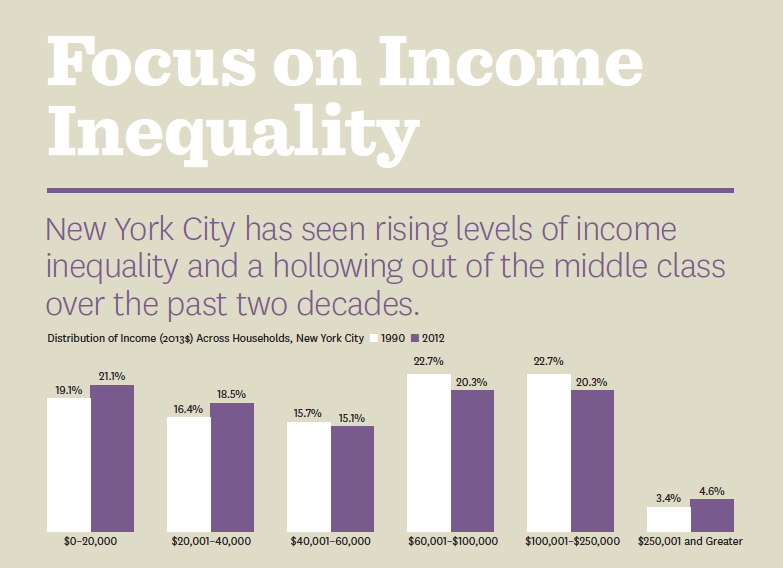
Furman Center Releases State of New York City’s Housing & Neighborhoods in 2013

In the past two decades, New York City has experienced a significant decline in the share of households in broad middle-income categories, and an expansion of households in the lowest- and highest-income categories, according to a new report released today by the NYU Furman Center.
As New York City's income distribution has become more polarized, the highest-income households have become more spatially isolated, or more likely to live in neighborhoods with households of similar income levels.
The State of New York City's Housing and Neighborhoods in 2013, released today by the NYU Furman Center, found that income inequality has become more pronounced in New York City since the 1990s. The share of NYC households earning more than $250,000 (in real terms) in annual income grew from 3 to 5% from 1990 to 2012, while the share of households earning $40,000 or less grew from 35 to 40%.
The report finds that these shifts in income distribution are consistent with changes seen in other large U.S. cities, including Chicago, Houston, Los Angeles, and Philadelphia.
As income inequality has grown, it has become more difficult for moderate- and low-income New Yorkers to find affordable rental housing. From 2005 to 2012, NYC renters' income stagnated while the cost of renting increased. As a result, the share of rental units that are affordable to lower-income New Yorkers declined. Moderate-income households (those earning between $45,000-70,000) are more rent burdened in New York City than in the U.S. overall. "Rent burdened" is defined as paying 30% or more of pre-tax income on rent and utilities.
As income distribution has become more polarized, according to the report, there has been increased spatial isolation by income in the city's neighborhoods; that is, the highest-income households have become less likely to live in the same neighborhoods as middle- or low-income households since 1990. During this period, New York City households in the top 10% of earners have become more likely to live in neighborhoods with households earning similar incomes.
The State of New York City's Housing and Neighborhoods in 2013 report also finds that while neighborhood conditions have improved citywide, aggregate gains in neighborhood conditions have not closed the significant gaps in environments between lower-income and higher-income New Yorkers.
"The location of a home allows access to neighborhood amenities and services, and determines potential exposure to neighborhood hazards," said Ellen. "While quality of life indicators, such as crime rates and access to high-quality schools, have improved across New York City, significant disparities persist across neighborhoods."
The report was released on May 28, 2014 at a forum at NYU School of Law titled, By the Numbers: Exploring Neighborhood Inequality, which explored the structural limitations to tackling income inequality, as well as the specific policy levers available to government leaders to address it. The event featured a keynote address by Gene Sperling, former Director of the National Economic Council and Assistant to the President for Economic Policy, and a panel moderated by Brent Staples of The New York Times Editorial Board.



